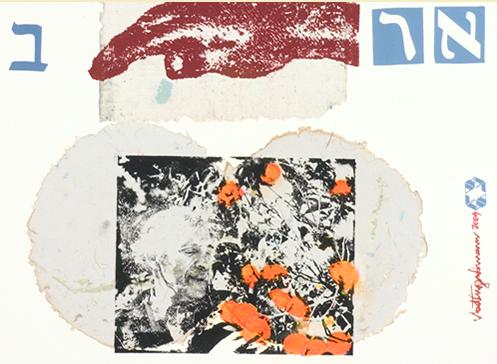Representation of the Moroccan in Contemporary Hebrew Literature
DOI:
https://doi.org/10.17851/1982-3053.4.6.91-97Keywords:
Israel, Moroccan Jews, IdentityAbstract
The main difficulty faced by immigrants in Israel, especially in the 1950s, and particularly by those coming from Morocco, was the concept of melting pot, the forced conception of forging the average Israeli by imposing that they gave up the symbols and traditional values they brought along in order to absorb the values and symbols of the society in which they started living and with which they were to be merged.
Downloads
References
ALCALAY, Ammiel [org.] Keys to the Garden: New Israeli Writing. São Francisco, City Lights Books, 1996.
BERLOVITZ, Iafa. Lehapes shivui mishkal al lahav hataar, o mahi kriá mizrahit [Procurar equilíbrio sobre o gume da navalha, ou o que é leitura oriental].Haaretz, 09/11/2004. Disponível em http://www.haaretz.co.il/hasite/pages/ShArtPE.jhtml?itemNo=499416&contrassID=2&subContrassID=12&sbSubContrassID=0 Acesso em 5 set. 2009.
BLOOM, Eytan. Hashichpul shel hamodel “mizrahi” bassadê hahevrati haisraeli – shnot hahamisshim vehaaliya hameira [Duplicação do modelo “oriental” no campo social israelense – os anos cinqüenta e a imigração rápida]. Dissertação de mestrado apresentada à Faculdade de Ciências Humanas Lester e Sally Antin, Unidade de Pesquisa da Cultura, sob orientação do Prof. Itamar Even-Zohar, maio de 2003. Disponível em Acesso: em 25 ago. 2009.
IZHAR, Uri. Mizrahim beIsrael: beaya, korban o kol atsmai? [Orientais em Israel: problema, vítima ou voz independente?] Crítica sobre o livro HEVER, Hanan, Shen’hav, Yehouda, Motzafi-Haler, Pnina [editores] Mizrahim beIsrael: Iyun bikorti mehudash, [Orientais em Israel: Estudo crítico renovado] Machon Van Leer/ Hakibutz Hameuchad, 2002. Hakéshet hademokratit hamizrahit. Dezembro 2002. Disponível em: Acesso em: 30 ago. 2009.
MADMONI-GERBER, Shoshana. Kikar hahalomot – Circle of Dreams. In Dönmez-Colin, Gönül [editora]. The cinema of North áfrica and the Middle East. Wallflower Press, Londres e Nova York, 2007. Disponível em: Acesso em: 14 set. 2009.
MEI-ANI, Naomi [redatora]. Mismach reka banosse: Yahadut Maroco – aliyá uklitá [mugash lehavrat haknésset Colette Avital]. [Relatório básico sobre o tema: O judaísmo do Marrocs – imigração e absorção – apresentado à deputada Colette Avital]. Haknésset – mehkar umeidá. Jerusalém, 22 de maio de 2005. Disponível em: . Acesso em: 14 set. 2000.
RAPOPORT, Miron. Tsarich lehavin, anachnu holim [é preciso entender, estamos doentes]. Haaretz, 22/09/2006. Disponível em: . Acesso em 13 set. 2009.
SHILO, Sara. Shum gamadim lo iavou [Nenhum duende vai aparecer]. Tel Aviv, Am Oved, 2006. SHMUELOFF, Mati. Ars im agenda: reayon im assofer vehaitonai Dudu Bussi [Marginal com agenda: entrevista com o escritor e jornalista Dudu Bussi] In Mevukash ms. 2, site de Mati Shmueloff, 8/11/2006. Publicado originalmente in Anashim, número 505, p. 20-24, 8/11/2006. Disponível em: Acesso em: 30 ago. 2009.
VIG, Shoshana. Peguisha im sofer – Sami Berdugo ‘Eino roe derech aheret lichtov ela al hapetsaim shelanu’ [Encontro com escritor – Sami Berdugo ‘Não vê outro modo de escrever a não ser sobre as nossas feridas’]. 10/1/2008. Disponível em Reader.co.il Acesso em: 20 ago. 2009.
Downloads
Published
How to Cite
Issue
Section
License
Os direitos autorais pertencem exclusivamente aos autores. Os direitos de licenciamento utilizados pelo periódico é a licença Creative Commons Attribution 4.0 (CC BY 4.0): são permitidos o compartilhamento (cópia e distribuição do material em qualquer meio ou formato) e adaptação (remix, transformação e criação de material a partir do conteúdo assim licenciado para quaisquer fins, inclusive comerciais.






